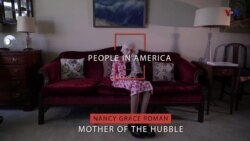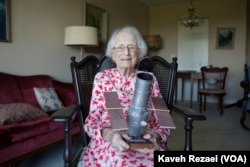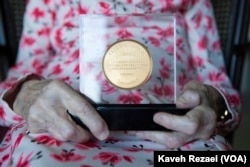The field of astronomy has often been dominated by men. However, Nancy Grace Roman changed that. Roman is the first chief of astronomy in the Office of Space Science at NASA, the US national space agency.
Roman oversaw the development of several space astronomy programs, space probes and telescopes. She was involved in launching three Orbiting Solar Observatories that used gamma and x-rays to study the sun from a low-Earth orbit.
“I traveled all over the U.S. to talk with astronomers and what they have wanted for generations was to get a telescope up above the atmosphere,” she says.
One of them is the Hubble Space telescope. Roman is widely regarded as the “Mother of Hubble”. It was put into orbit in April of 1990. The telescope provided astronomers with hundreds of thousands of images. It also helped determine the existence of dark energy and the age of the universe as well as other scientific matters. It remains one of NASA’s most successful and enduring missions.
“I never owned a telescope,” Roman says, however she credits her success to a mixture of luck, determination, and the support of her parents.
“My parents inspired and stimulated my curiosity. My father was a scientist and answered my scientific questions,” she says. My mother would take me on walks and point out birds, plants as well as share with me the constellation of stars”.
Roman’s interest in astronomy grew. During her school years, Roman would read as many astronomy books in the Baltimore library as she could find.
“I never was interested in just looking at the sky. I wanted to know what stars were like, how they behaved and just generally what astronomy was all about,” says Roman.
Roman was not discouraged by teachers who suggested that she had no place in astronomy or physics. Roman graduated from Swarthmore College in 1946. She has a Bachelor of Arts in Astronomy and received a doctorate in the same field in 1949 from the University of Chicago.
After earning her doctorate, Roman taught at the University of Chicago as an assistant professor. She was the first such woman on the faculty.
“I didn’t stay there long because I saw very little chance of tenure as a woman in a research institution in astronomy,” Roman says.
Roman then entered the radio astronomy program at the Naval Research Laboratory in Washington. When NASA was formed in 1958, Roman submitted an application to work there.
Nancy Grace Roman retired in 1979. She says that despite the challenges she faced in her own career, she is proud to have played a part in advancing modern astronomy.








